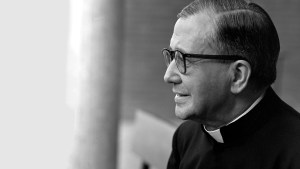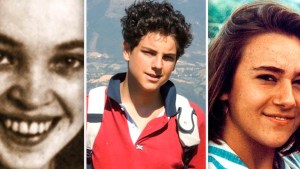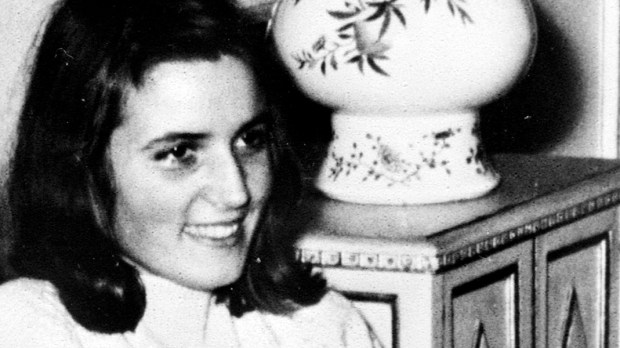Maria Montserrat Grases Garcia (lovingly known as Montse) was born in Barcelona on July 10, 1941. Montse was the second of nine children, and her parents taught her to love God and trust Him. Her upbringing brought out a natural, lively, and spontaneous temperament that brought her the affection of all.
During the first few years of her life, Montse suffered from bronchitis and other respiratory problems. She required constant care as remedies of the day were ineffective. She seemed to get better on her own, and by the age of three, her condition had greatly improved. By October of 1946, she was able to start school.
Montse made many friends and loved sports, dancing, music, and acting. She was the type of young woman who brought forth a smile from those who met her. When she was 13, she began to attend meetings and functions that promoted Christian formation. Her mom and dad had become active in Opus Dei in 1952. They encouraged their daughter to join in, explaining how it would help her mature spiritually and humanly. But Montse was not sure if she was ready to commit to Opus Dei.
Montse began her high school education under the nuns in 1951. From there, she continued her studies at the Professional College for Women. In her spare time, she and some friends made frequent trips to the poor regions of Barcelona to teach catechism to children, bringing candy and other treats with them.

Read more:
Opus Dei celebrates 90th anniversary with new book about its founder
Montse continued studying hard and being physically active. She played ping-pong, tennis, and netball. She even climbed the mountains near Seva and received an award for winning a bicycle race. Then in 1956 she attended an Opus Dei retreat. She was now 15 and felt a desire to discern whether or not she would join Opus Dei. At the end of the retreat she still was not sure and embarked on a period of prayer and sacrifice to aid her in making her decision.
Montse continued to pray and sought advice from those around her. Then on December 24, 1957, she finally heard God’s call for her to come to Opus Dei, and she sought to join this spiritual family. From that day forward she would make a concerted effort every day to aim higher in her spiritual life and in her quest to attain holiness.
Out of love
She meditated on the Life of Christ and attended Eucharistic Adoration as much as possible. She also developed her deep devotion to the Blessed Virgin. Montse strived to perform her daily routines, focusing on doing them out of love rather than out of necessity. She had no idea her holiness was lending a sense of peace to those around her, including family and friends, but that is what happens when someone lives close to God.
In 1958 Montse went with friends to a ski resort at La Molina. Skiing down a hill, she fell and injured her leg. This caused her great pain, and it did not go away. She bore the pain bravely and offered it up for the souls in purgatory. The pain worsened, and after several months, she was taken to a Red Cross Clinic for evaluation. In June of 1958, doctors diagnosed her as having Ewing’s Sarcoma. After Montse was told of her condition she was heard singing in her room: “When I was living so happily, without thinking of love, you wanted me to love you, and I loved you passionately. And I will continue to love you even after death. For I love you with the soul, and the soul never dies.”
When are you coming for me?
Maria Montserrat Grases Garcia died on March 26, 1959. It was Holy Thursday, and she was just 17 years old. It was reported that she tried to sit up to get a closer look at a picture of Our Lady. Her last words were,“How much I love You! When are You coming for me?”
Many people came forward attesting to her humble yet heroic and exemplary life. Her reputation continues to grow to this day. On April 19, 2016, Pope Francis confirmed that Montse had lived a life of heroic virtue and was worthy of the title Venerable. Next step in her saintly journey is beatification.
Venerable Montse Grases Garcia, please pray for us.

Read more:
Do you know all the holy youth who are patrons of the synod?

